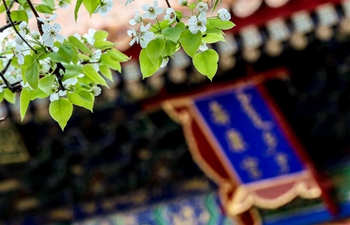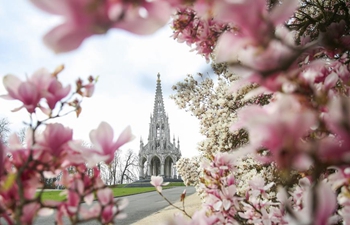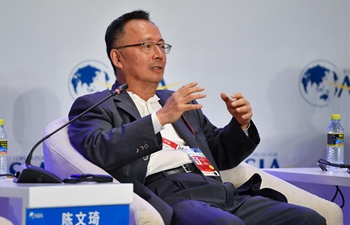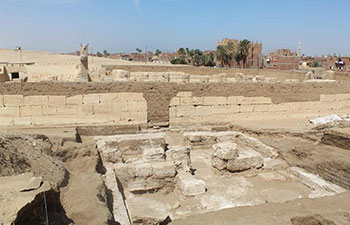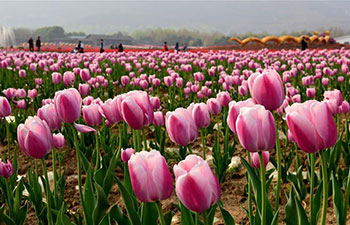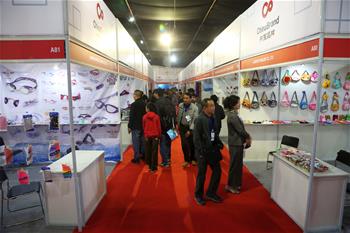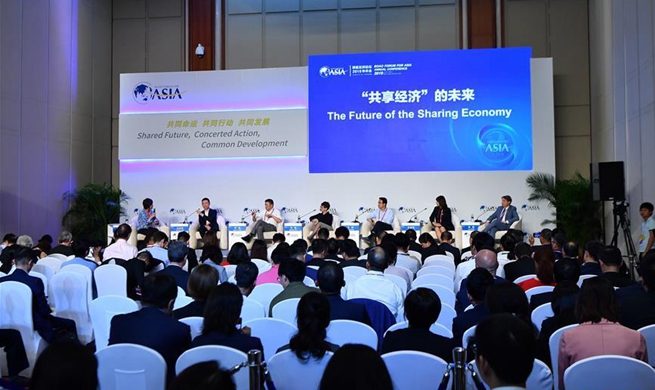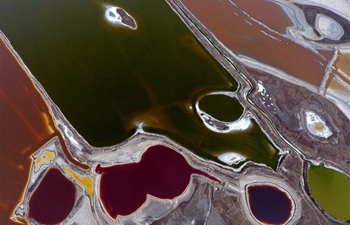BEIJING, March 29 (Xinhua) -- The Jingxi business center, in the western suburb of Beijing, is a new landmark featuring "green technologies," including heat-insulating walls, an electromechanical system with heat recovery technologies and a roof covered in plants.
"Eco-friendly buildings are not only a way to save energy, protect the environment, and promote recycling and sustainable development, they also improve the quality of life," said Lian Yuming, president of Beijing International Institute for Urban Development.
With a plan to build a Beautiful China, the country has been promoting the efficient use and recycling of resources. The 2019 government work report, published earlier this month, vowed to expand the construction of eco-friendly buildings.
Hong Jie, chairman of Fujian-based Skshu Paint Co., Ltd., said the company's eco-friendly products featuring such functions as formaldehyde-resistance, germ-resistance, waterproof and thermal insulation have become increasingly popular.
The company saw its revenue reach 3.6 billion yuan (534 million U. S. dollars) last year, up 36 percent from the previous year.
In 2005, China issued a guidance for eco-friendly construction technologies to encourage and regulate the industry. In 2017, China published a five-year plan for the development of eco-friendly construction, setting the goal to increase the proportion of eco-friendly buildings in all new buildings to 50 percent by 2020.
Local governments across the country have also come up with incentives and regulations for eco-friendly buildings.
In 2018, the northwestern Ningxia Hui Autonomous Region gave more than 12 million yuan in bonuses and subsidies to eco-friendly buildings. So far, the region has around 5.4 million square meters of eco-friendly buildings.
East China's Shandong Province recently decided to award or give discounts in resource prices to organizations which develop, construct or operate eco-friendly buildings. The province now has 330 million square meters of "green" buildings.
The Vanke Fengjing in the southern Chinese city of Guangzhou is a typical eco-friendly residential complex.
Ju Songtao, designer of the complex, said the walls, windows and doors were all built with heat insulating material, which can help reduce over 60 percent of energy consumption of air conditioning and heating and save 1.07 million kilowatt-hours of electricity annually.
The buildings are also equipped with sewage treatment and rainwater recycling facilities, which can help save 11,000 tonnes of water every year.
Jiang Yi, professor of architecture at Tsinghua University, said artificial intelligence and big data technologies are being used in the construction of eco-friendly buildings to collect and analyze energy consumption data.
"Eco-friendly buildings are the trend forward for urban construction and are an integral part of high-quality economic development," said Lian.




